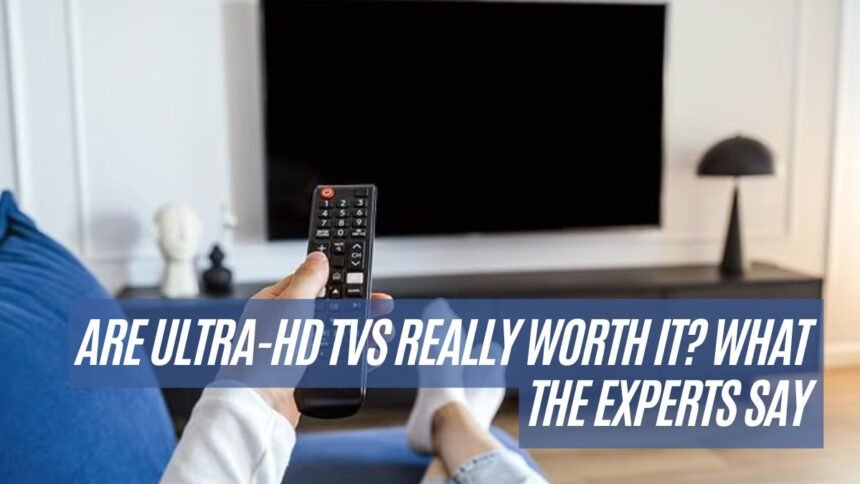Many consumers are investing heavily in ultra-high-definition televisions, but new research suggests the leap to 4K or even 8K might be a waste of money for the average living room setup. Scientists at the University of Cambridge and Meta have found that, under typical viewing conditions, the human eye often can’t distinguish a noticeable difference between a 4K or 8K screen and a similarly sized 2K screen, the kind often found in computer monitors and laptops. The study raises questions about whether the perceived benefits of these expensive upgrades are actually worth the cost.
“At a certain viewing distance, it doesn’t matter how many pixels you add,” said Dr. Maliha Ashraf, the first author of the study from the University of Cambridge. “It’s just, I suppose, wasteful because your eye can’t really detect it.”
The findings, published in the journal Nature Communications, detail how Ashraf and her team sought to determine the true resolution limit of the human eye. They noted that while 20/20 vision is often associated with the ability to distinguish 60 pixels per degree (PPD), many people with normal or corrected vision can actually see finer details. This discrepancy led them to directly measure human visual acuity.
“If you design or judge display resolution based only on 20/20 vision, you’ll underestimate what people can really see,” Ashraf explained. “That’s why we directly measured how many pixels people can actually distinguish.”
The Cambridge team utilized a 27-inch, 4K monitor mounted on a mobile rig. This allowed them to adjust the screen’s distance from the 18 participants, all of whom had normal or corrected-to-normal vision. Each participant was shown two types of image in random order at various distances. One featured one-pixel-wide vertical lines in various color combinations, while the other was a plain grey block. The task was simple: identify which image contained the lines.
“When the lines become too fine or the screen resolution too high, the pattern looks no different from a plain grey image,” Ashraf clarified. “We measured the point where people could just barely tell them apart. That’s what we call the resolution limit.”
The results indicated that the human eye is capable of resolving more detail than previously believed. The average resolution limit was found to be 94 PPD for greyscale images viewed head-on, and 89 PPD for red and green patterns. Yellow and violet patterns registered a lower resolution limit of 53 PPD.
In a related experiment, 12 participants were shown white text on a black background, and vice versa, at varying distances. They were instructed to indicate when the text appeared as sharp as a designated “sharp reference” version.
“The resolution at which people stopped noticing differences in text matched what we saw with the line patterns,” Ashraf noted.
To translate their findings into practical advice for consumers, the researchers have created a chart illustrating optimal screen sizes and viewing distances in relation to standard resolutions. “In other words, if your setup falls into one of those squares, you wouldn’t gain any visible benefit from going higher,” Ashraf stated.
The team also launched a free online calculator that allows users to input their viewing distance, screen size, and resolution. The tool then indicates whether the setup exceeds the human eye’s resolution limit, thus determining whether a higher-resolution screen would actually improve the viewing experience.
If you already own a 44-inch 4K TV and you’re sitting about 2.5 meters away, you’re actually seeing more detail than your eyes can pick up. Ashraf put it simply: upgrading to an 8K model, same size, won’t look any sharper.
This study cuts through a lot of the hype around TV specs. Before dropping a chunk of cash on the latest upgrade, think about whether the extra resolution will really make a difference—especially since your eyes and your usual spot on the couch set some pretty clear limits. There’s even an online calculator that helps you figure all this out, so you can make a smarter choice and maybe keep some money in your wallet.
Meta helped fund the research, since they care a lot about how people see things on screens, especially for virtual and augmented reality. And these findings aren’t just for TV shoppers. They could shape how screens get designed for everything from medical gear to engineering tools.












